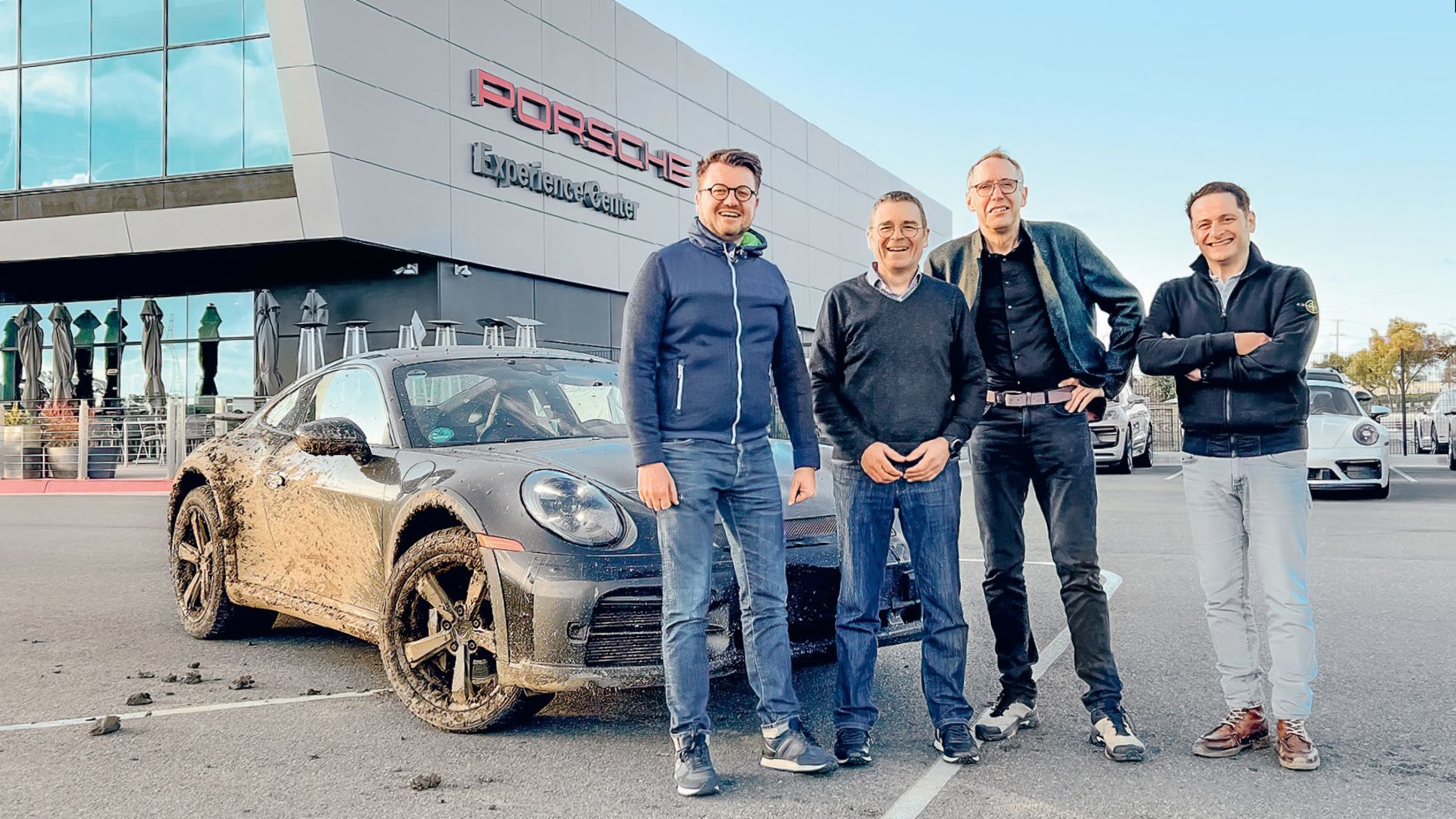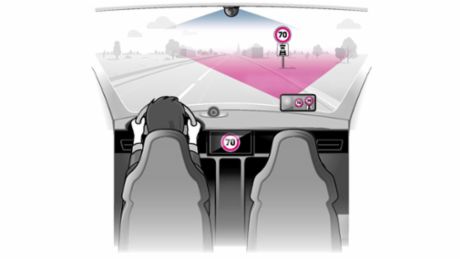The Porsche Cayenne has been driving through urban canyons of Shanghai for several hours now. The drive seems directionless, yet the driver is following a well-thought-out plan. He stops several times to recharge the battery of the plug-in hybrid—for example in supermarket parking lots or in parking garages where there are public charging stations. At the different stops, he tests different payment methods such as credit cards and apps. The frequent recharging processes have a special purpose: The new vehicle is on the road as part of its international validation before the start of series production, with a local test driver at the wheel. This process is used to ensure that the Porsche satisfies the high expectations of customers and delivers on the brand’s promise of quality later on.
Both the ‘handshake’ with the charging station and the charging experience for the customer are tested. “When we start international validation, the development of the model is already so far advanced that we have basic testing, maturity tests, and release tests behind us,” explains Alexander Kopp, who together with Fabian Wörner is responsible for coordinating complete vehicle validation at Porsche Engineering in the ‘Complete Vehicle Validation & Analysis’ team.
“Quality assurance therefore has a particular significance: It is important to drive the models in real-world situations in the same way that customers do—under what are sometimes changing conditions, since the world doesn’t stand still. Things are always changing—laws are often amended, for example.” Differentiated, detailed validation in a wide variety of markets is therefore extremely important for the customer experience. There’s no other way for a Porsche to reach production maturity, because the functional, visual and emotional quality of the product is revealed by the details.
Validation in two shifts
It is important for the validation drives to be conducted at many different locations in order to obtain as complete a picture as possible. Market-specific circumstances such as local traffic conditions or specific infrastructure for online services can only be validated in that particular location. This is why Porsche Engineering has development engineers as well as testing and quality staff working all around the world. Local validation drivers work with them in two shifts a day, with each driver spending a third of the driving time in the city, on country roads and motorways, respectively, in order to get as realistic a picture as possible.
“It is precisely this combination of high evaluation expertise and local understanding that sets Porsche Engineering apart,” says Dr. Nazif Mehmet Yazici, who is responsible for complete vehicle quality and validation in the Corporate Quality department at Porsche AG. “That’s why we have been working closely and successfully together for years.”
“It is important to drive the models in real-world situations in the same way that customers do—under what are sometimes changing conditions, since the world doesn’t stand still.” Alexander Kopp
With the introduction of comprehensive Connect services, the importance of market-specific function validation has increased immensely. Experiencing vehicle functions and services in real-world operation under country- and market-specific conditions, with a focus on local functionality and interoperability, provides early insights that can help improve product quality and customer satisfaction. For certain purposes, such as validating the charging functions of electric vehicles, intensive validation procedures called special programs are also conducted.
This trend is likely to continue in the future: “Due to technological advances, we are being confronted with an explosion of potential vehicle functions,” says Christian Friedl, Vice President Corporate Quality at Porsche AG. “This is why we have to consider which features are relevant to our customers at an early stage. This also varies hugely from market to market, which is why it will be all the more imperative for us to be on the ground in the future.”
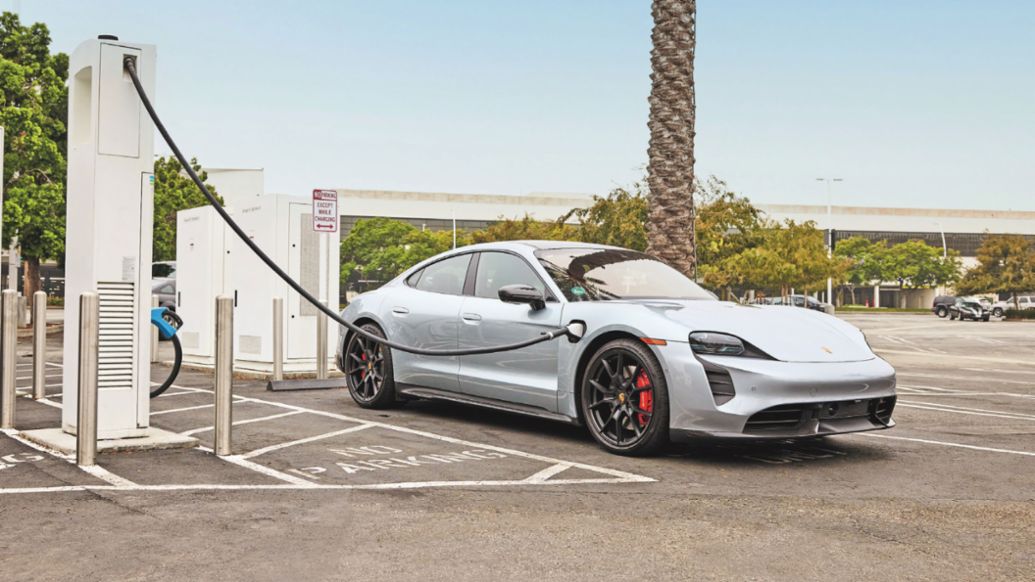
Conditions during the validation drives are highly variable. While in Shanghai they are primarily conducted in urban areas, in Norway the driver might not see another person for hours. “The country is a pioneer in electrification in many respects,” says Fabian Wörner. “That’s why vehicle interoperability with the charging infrastructure is particularly important for Porsche in this market.”
Validation in Oslo
Porsche Engineering carried out validation of the Taycan there, for example, prior to its market launch. While the model was subjected to continuous subzero temperatures during cold-country testing, international validation takes a different approach. “In the urban validation cluster, the vehicle is roadtested in Oslo, where it is exposed to changing temperature influences during the day and at night. The driver must be able to open and start it again the next morning without any functional impairments. Another focus is on comfort functions as well as preconditioning, for example on the departure timer set using the app or the engine-independent heating,” says Wörner, describing one use case. Another example: Whereas in Germany salt is used on roads during snow and ice conditions in winter, the Norwegians spread grit.
“For our vehicles, this means that the bodywork and add-on parts are subjected to greater stress due to grit exposure,” explains Wörner. Such market-specific feedback can lead to corrections and improvements—or inform requirements for future optimization measures.
Sensor for market trends
Alexander Kopp mentions another example from the US. For driver assistance systems, the vehicle uses copious sensor data and stored predictive map data. The interpretation of lane markings is made more difficult, because they are not uniform in American states—sometimes white as in Germany, but also yellow in some cases, which in Germany is only used for construction sites.
“Market-specific peculiarities like this have to be taken into account and safely implemented by the function development team in Weissach,” says Kopp. The local teams quickly identify such cases and pass on their observations to the developers. At the same time, they also have another important function. “Our teams act as sensors for market currents and trends that can be incorporated into development and marketing,” states Kopp. He also points out how different the drivers are in the markets: “This allows us to learn what users in the respective markets require in terms of systems and functions—in contrast to the view from a German engineer’s perspective.” International validation drives are conducted not only on public roads, but also at the Nardò Technical Center in Italy. At the proving ground in Apulia, the vehicles are driven on a number of the more than 20 test tracks to test them under sometimes extreme conditions.
“This is important for Porsche, because many of our buyers want to experience their vehicles as sports cars at trackdays on the race track,” says Wörner. “Everything has to work then, of course—just as it does in a motorsport environment, where Porsche has racked up countless victories on the world’s race tracks.”
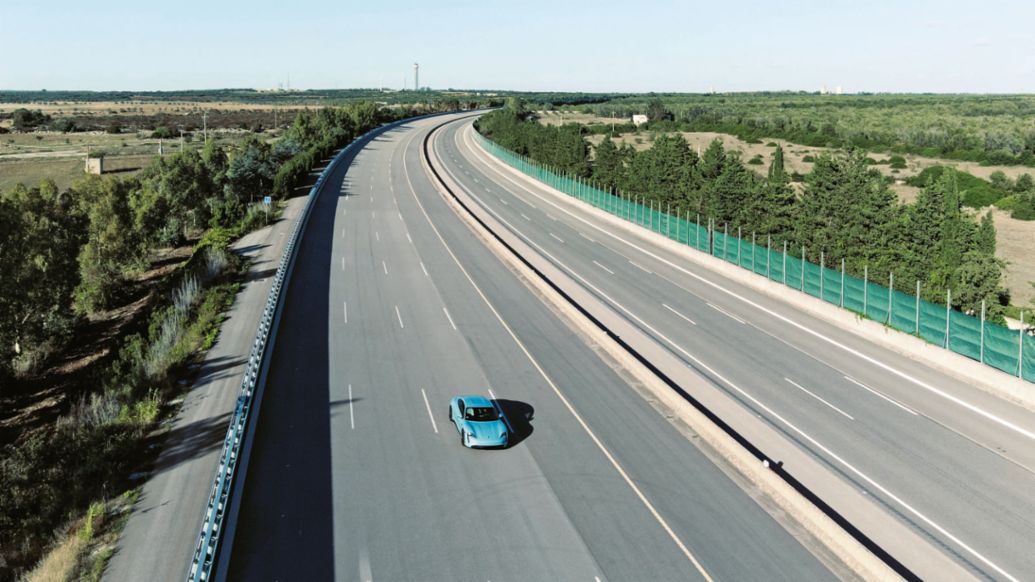
Feedback during the drive
No matter where in the world the validation takes place, the findings gained in the process always find their way back to the developers, who then use the information to further improve the quality of the new models. The vehicles are equipped with measurement technology from Porsche that continuously records data and transmits it to a database. The ComBox developed by Porsche Engineering is used for efficient data utilization. The ComBox uses WiFi or a mobile network to transmit all data from the international validation vehicle to a database while the drive is still ongoing—including the observations of the people behind the wheel: Drivers can document noteworthy occurrences by pressing a button in the vehicle that starts a measurement and voice recording. The local experts can then compare this information to the measurement data and the camera images.
“The local teams’ validation of functional and emotional aspects plays a key role in ensuring the quality of the Porsche brand.” Fabian Wörner
During the subsequent evaluation, the Porsche analysts can get to the bottom of any anomalies. This makes it possible to translate what the drivers subjectively perceived and described into objective terms. The events collected can be retraced exactly thanks to the preliminary analysis and objectification, which means that any malfunctions can be reproduced very easily.
“The local expert teams can then recreate the situation and check whether the event occurs again,” says Wörner. Their mission is clear: “The local teams’ validation of functional and emotional aspects plays a key role in ensuring the quality of the Porsche brand—always taking into account the demands of our international clientele.”
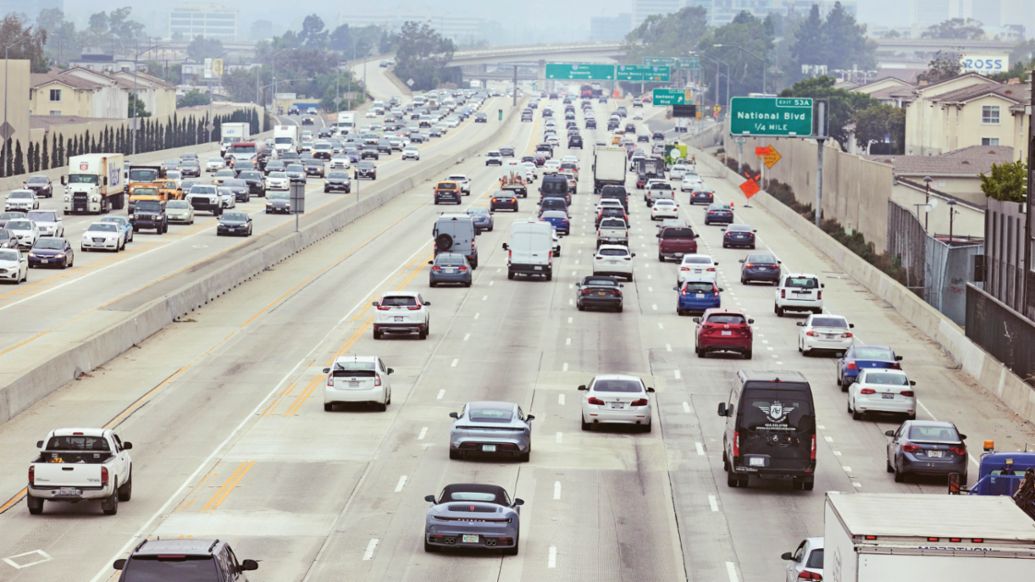
Interview - “Combining technical expertise with knowledge of the market”
Real public-road (quality) validation will remain indispensable for the foreseeable future—even if virtual methods are becoming increasingly important. In this interview, Christian Friedl, Vice President Corporate Quality at Porsche AG., and Dr. Nazif Mehmet Yazici, Director Complete Vehicle Quality and Validation in Friedl’s team, talk about different customer expectations and future challenges.
Why is international validation so important?
Christian Friedl: We have a very international clientele with very specific requirements—and a high quality standard, the Porsche quality standard. About one third of our customers come from each of the world regions of Europe, North America, and Asia, the latter with a main focus on China. That’s why we test product quality under real conditions on location. This is the only way we can ensure that our vehicles meet customers’ expectations. The vehicles also have to be able to allow for local laws and special factors. For example, traffic signs in China look different from those in Europe or the US. Nevertheless, our vehicles must be able to recognize them reliably—at any time of day or night, in sunshine, fog or a monsoonal downpour.
Dr. Nazif Mehmet Yazici: Added to this are the different ways in which customers in different markets use the vehicles. Through our local drivers, we learn about the paradigms and needs in each place. In China, the expectations of displays, fans and fragrance systems, for example, are completely different from ours.
What is most important when it comes to validation?
Friedl: In the simplest terms: You can’t validate functions for China through Swabian-colored glasses. We need local experts who understand and represent our customers. It’s the only way we can offer a product tailored to the respective market. In terms of methodology, we distinguish between the breadth and the depth of the validation. In the context of validation breadth, we focus on emotional validation in addition to the visual and functional qualities—our products, after all, are experienced to a large extent through emotions. When it comes to new features such as assisted or piloted driving, the interaction between the experts on location and the Swabian engineer then comes back into focus. Together, they form a team that combines deep-reaching technical expertise with knowledge of the local market.
Yazici: That’s also one of the reasons why we work with Porsche Engineering on international validation. The experts know the local market and, at the same time, have the technological expertise to assess functions technically. This is the basis for solid feedback, which then leads to corrections and improvements—or informs requirements for future functions.
“Validation focuses more on functionality, hours of operation, and the accessibility of vehicles in the local ecosystem.” Dr. Nazif Mehmet Yazici
You have already noted that vehicle functions are becoming increasingly complex. What does this mean for international validation going forward?
Yazici: Connectivity, digitalization, and functions with a high degree of automation are increasingly coming to the fore—and this with great variation in the world’s different regions. This is why we have to ask ourselves: What does this mean for highly automated driving systems? What might automated valet parking look like? We are also observing another trend: Validation focuses less and less on kilometers driven and more on functionality, hours of operation, and the accessibility of vehicles in the local ecosystem. Or in other words: The focus is increasingly being directed at the overall package.
Friedl: I would like to add one more aspect. Today, validation is at the end of the development process. In the future, we intend to describe new customer requirements even more precisely at the beginning of development, and start thinking even earlier about how we can validate them later on. The end result could be a control loop that forms a continuous link between customer requirements and validation. That would make it much easier to factor in improvements while development is still in progress.
Yazici: It is becoming increasingly important to make intelligent use of vehicle data to identify usage behavior and errors. This data holds great potential for collaboration between validation and development in early phases. This is a challenge for us as a group, including our partner Porsche Engineering. We have to make the best possible use of this treasure trove of data.
“You can't validate functions for China through Swabian-colored glasses. We need local experts who understand and represent our customers.” Christian Friedl
Let’s conclude by looking to the future. Which trends will be important—virtual validation, for example?
Friedl: We will invest heavily in virtual validation, for example to ensure basic functionality. But in my view, adaptation to market-specific customer expectations will have to be done in real life for the foreseeable future. In addition, there will always be new functions in the car that we cannot yet validate virtually. The level of virtual validation will continue to rise, but without completely replacing real validation. So we will have to do the one without neglecting the other.
Yazici: There are now, in fact, very impressive simulation methods—Porsche Engineering’s EMC lab in Bietigheim, for example, where my cell phone thought it was in New York and had to connect to the US network. So we can use simulations to test certain interactions in advance. Nevertheless, the combination of virtual and real validation will remain indispensable over the next two decades.
Friedl: To put a bit of a spin on it: Validation is very much a question of ‘emotional quality assurance’. And I very much hope that 20 years from now, we will still not be able to map emotional quality virtually.
Summary
The requirements of different markets for the quality and operation of new vehicles can only be verified on location. Porsche Engineering therefore deploys mixed teams consisting of local drivers and engineers around the world. The knowledge gained in the process is immediately fed back to the developers. The aim is to consistently ensure the high quality standards of the Porsche brand.
Info
Text first published in the Porsche Engineering Magazine, issue 2/2023
Text: Marc-Stefan Andres, Christian Buck (Interview)
Illustrations: Anthony Dias, Luca Santini
Copyright: All images, videos and audio files published in this article are subject to copyright. Reproduction in whole or in part is not permitted without the written consent of Dr. Ing. h.c. F. Porsche AG. Please contact newsroom@porsche.com for further information.
